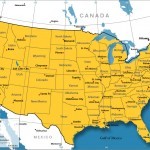If you have ever handled a fluorescent lamp you know how fragile they are and how easy it is to break one. I myself have a – rather embarrassing – memory of dropping a box of approximately thirty 4′ long lamps from the height of 1 1/2 feet. The nearly simultaneous explosion of all of those bulbs caused the box to swell outwards (luckily it held) and then compress in on itself due to the vacuum created. I was lucky that neither I nor anyone else was hurt. Lesson learned. But what about cleaning up the mess? In order to minimize the risk of mercury exposure (or other hazards that may be present such as lead), please follow these steps:
Cleaning Up a Small Number of Lamps:
- Sweep up debris with a small broom or a whisk broom. Sweep gently to avoid suspending phosphor powders in the air.
- DO NOT VACUUM broken lamp debris. The exhaust from the vacuum will disperse mercury or other toxins into the air. If you must vacuum the debris, only vacuum after sweeping up as much debris as possible and wiping up the powder with a wet paper towel.
- Place the debris in an airtight container (a sealable bag, glass jar, or pail with a tight fitting lid).
- Seal the container.
- Try to disperse the mercury vapor by opening windows or doors.
Cleaning Up a Large Number of Lamps:
If a large number of lamps break, there is a high potential for exposure to airborne mercury. Immediately close off the area with the broken lamps and call a local hazardous materials response agency, usually the local fire department.
Management and Disposal of Broken Lamps:
Here is where it gets tricky for the simple reason that some states will allow you to continue to manage broken lamps as a universal waste whereas other states strictly forbid (at least officially) the management of broken lamps as a universal waste. That leaves you with one of two options:

- Continue to manage the recovered broken lamps as universal waste:
- Label as “Universal Waste – Lamps” or “Waste Lamps” or “Used Lamps”. It is recommended you add to the label, “Accidentally Broken”.
- Accumulate on-site for no longer than one year, unless more time is necessary to facilitate disposal.
- Comply with all other requirements applicable to Universal Waste Handler status (Small Quantity Handler or Large Quantity Handler).
- Self-transport or offer for transport off-site by Universal Waste Transporter to another Universal Waste Handler or Destination Facility.
- Manage as a solid waste outside of the universal waste regulations.
- Conduct hazardous waste determination.
- Manage as either a hazardous waste or a non-hazardous waste per the regulations of your state.
The universal waste regulations require you to manage them (batteries, lamps, mercury-containing devices, & recalled pesticides) in a way that prevents a release to the environment. If your state precludes the management of broken lamps as a universal waste, then that is just one more reason to use extra care when handling lamps.
Daniels Training Services 815.821.1550 |
Accidents happen. Be sure that when they do you remain in compliance with both state and Federal RCRA regulations.
